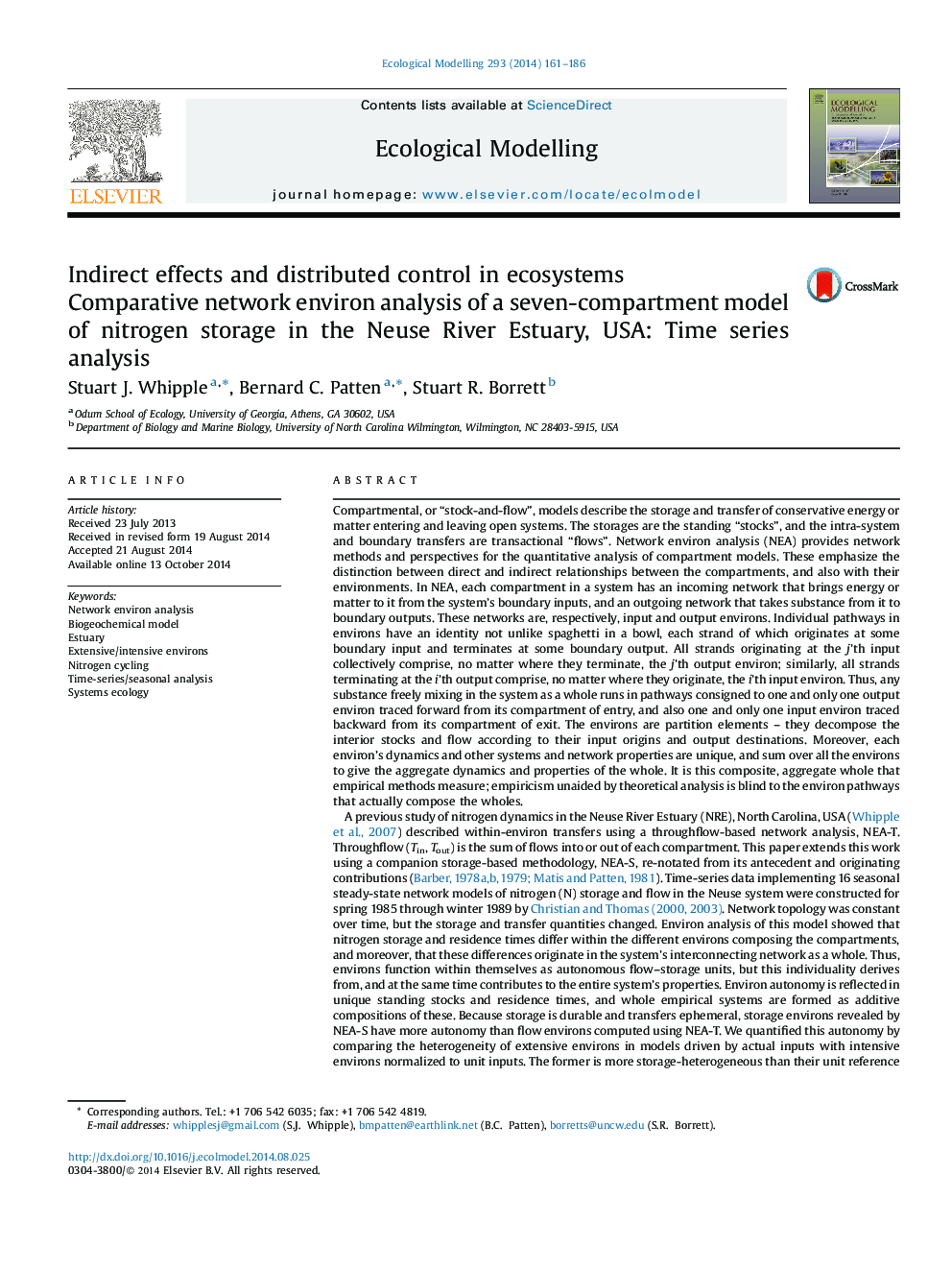| کد مقاله | کد نشریه | سال انتشار | مقاله انگلیسی | نسخه تمام متن |
|---|---|---|---|---|
| 4375801 | 1617453 | 2014 | 26 صفحه PDF | دانلود رایگان |
عنوان انگلیسی مقاله ISI
Indirect effects and distributed control in ecosystems
ترجمه فارسی عنوان
اثرات غیر مستقیم و کنترل توزیع شده در اکوسیستم ها
دانلود مقاله + سفارش ترجمه
دانلود مقاله ISI انگلیسی
رایگان برای ایرانیان
کلمات کلیدی
تحلیل محیط شبکه، مدل بیوگرافی شیمیایی، رودخانه، محدوده گسترده / فشرده، نیتروژن دوچرخه سواری، تجزیه و تحلیل زمان / سری فصلی، محیط زیست سیستم،
موضوعات مرتبط
علوم زیستی و بیوفناوری
علوم کشاورزی و بیولوژیک
بوم شناسی، تکامل، رفتار و سامانه شناسی
چکیده انگلیسی
A previous study of nitrogen dynamics in the Neuse River Estuary (NRE), North Carolina, USA (Whipple et al., 2007) described within-environ transfers using a throughflow-based network analysis, NEA-T. Throughflow (Tin, Tout) is the sum of flows into or out of each compartment. This paper extends this work using a companion storage-based methodology, NEA-S, re-notated from its antecedent and originating contributions (Barber, 1978a,b, 1979; Matis and Patten, 1981). Time-series data implementing 16 seasonal steady-state network models of nitrogen (N) storage and flow in the Neuse system were constructed for spring 1985 through winter 1989 by Christian and Thomas (2000, 2003). Network topology was constant over time, but the storage and transfer quantities changed. Environ analysis of this model showed that nitrogen storage and residence times differ within the different environs composing the compartments, and moreover, that these differences originate in the system's interconnecting network as a whole. Thus, environs function within themselves as autonomous flow-storage units, but this individuality derives from, and at the same time contributes to the entire system's properties. Environ autonomy is reflected in unique standing stocks and residence times, and whole empirical systems are formed as additive compositions of these. Because storage is durable and transfers ephemeral, storage environs revealed by NEA-S have more autonomy than flow environs computed using NEA-T. We quantified this autonomy by comparing the heterogeneity of extensive environs in models driven by actual inputs with intensive environs normalized to unit inputs. The former is more storage-heterogeneous than their unit reference counterparts, with dissolved nutrients NOx, DON, and NH4 exhibiting greatest heterogeneity. A previous NEA study of distributed control in this same model by Schramski et al. (2007) showed that NOx controls the system whereas sediment is controlled by the system. In the present study, NOx dominates storage in extensive environs, and therefore, is controlling in actuality. However, in the intensive unit, environs sediment accounted for most of the storage, reflecting greater control potential. This potential is expressed by the sediment acting like a capacitor for N, seasonally sequestering and releasing this element in the role of a biogeochemical regulator.
ناشر
Database: Elsevier - ScienceDirect (ساینس دایرکت)
Journal: Ecological Modelling - Volume 293, 10 December 2014, Pages 161-186
Journal: Ecological Modelling - Volume 293, 10 December 2014, Pages 161-186
نویسندگان
Stuart J. Whipple, Bernard C. Patten, Stuart R. Borrett,
